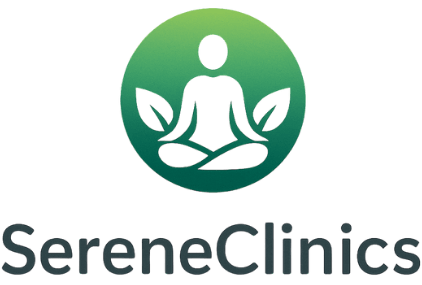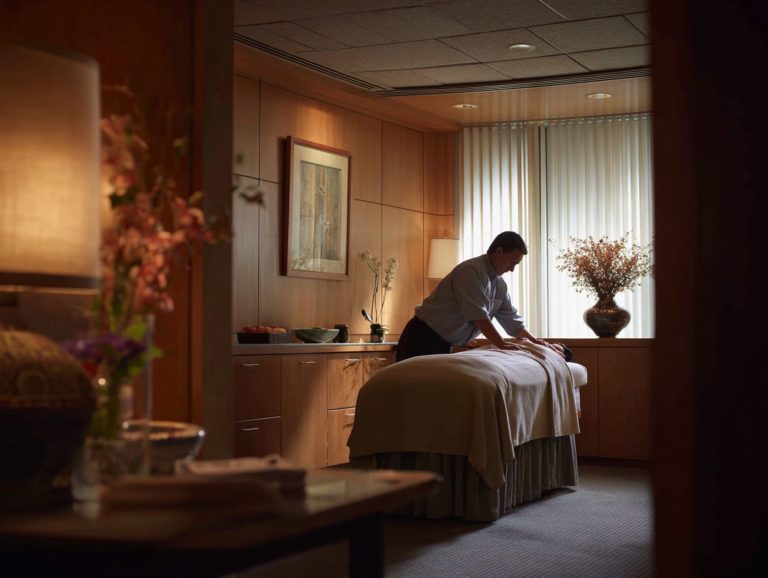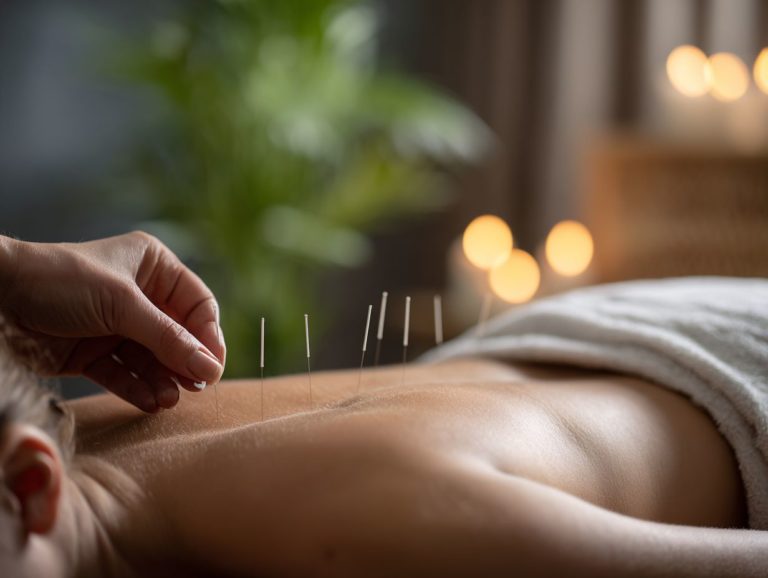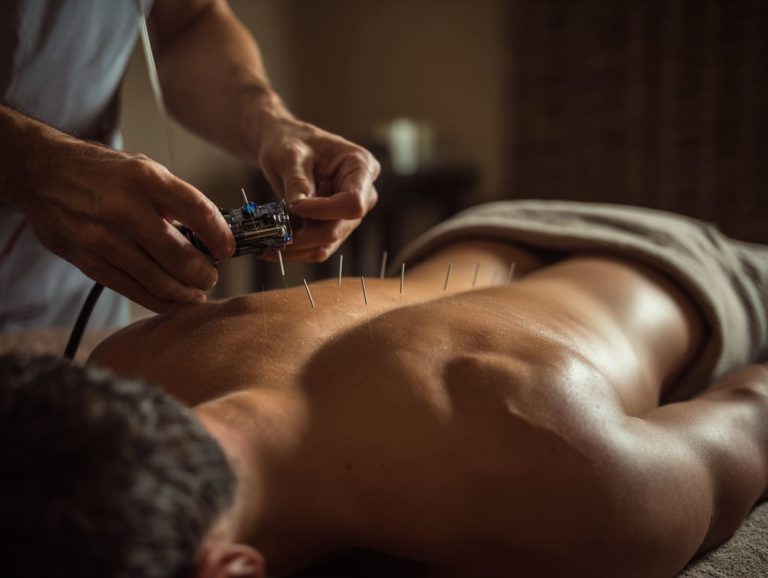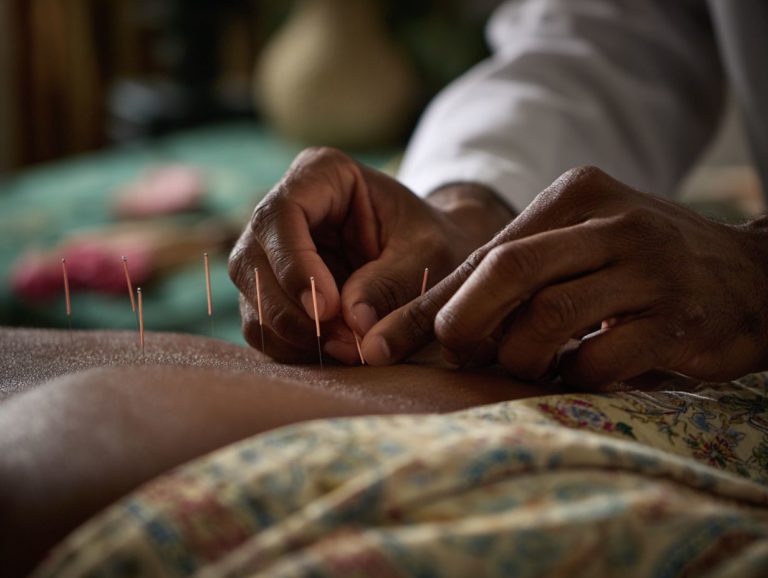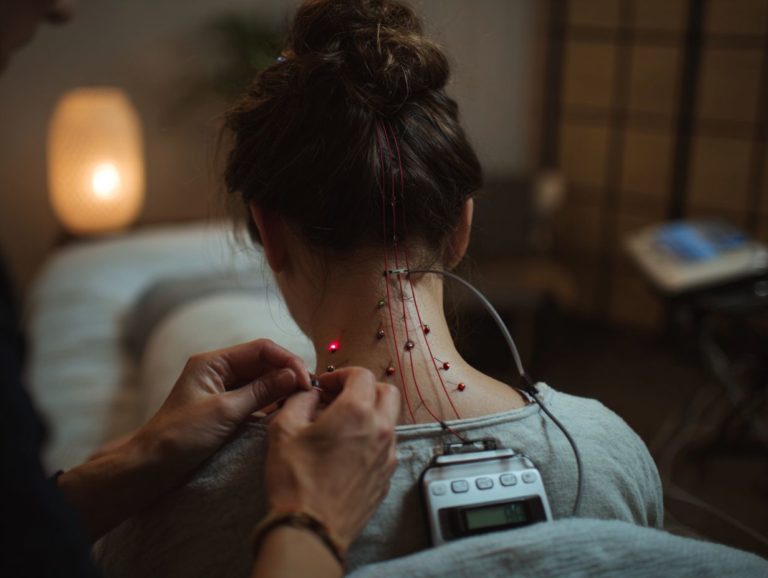Acupuncture Credentialing: Certifications and Licenses
Introduction to Acupuncture Credentialing What does it take to become a licensed acupuncturist in the USA? Acupuncture credentialing makes sure practitioners provide safe, effective care supported by thorough education and standards. From national certifications like those from NCCAOM to state-specific licenses, this guide demystifies the process-empowering you with the knowledge to advance your career and build patient trust.
Key Takeaways:
Contents
- 1 Educational Prerequisites for Credentialing
- 2 National Certification Overview
- 3 Acupuncture Certification Statistics in the US (2018)
- 3.1 Licensed Acupuncturists by Top States: Total Licensed Acupuncturists
- 3.2 Licensed Acupuncturists by Top States: Percentage of US Total
- 3.3 Acupuncturist Density per 100,000 Population: Top States Density
- 3.4 AOM Schools and Programs: Total Counts
- 3.5 AOM Schools and Programs: Percentage Distribution
- 3.6 Role of NCCAOM in the U.S.
- 3.7 Eligibility Criteria for Certification
- 3.8 Certification Exam Structure and Content
- 4 Types of National Certifications
- 5 State Licensure Fundamentals
- 6 Licensure Application Process
- 7 Examinations for Licensure
- 8 Continuing Education Mandates
- 9 Frequently Asked Questions
- 9.1 What is acupuncture credentialing, and why is it important for certifications and licenses?
- 9.2 How do I obtain a certification in acupuncture as part of credentialing?
- 9.3 What are the differences between certification and licensure in acupuncture credentialing?
- 9.4 Which states require licenses for acupuncture practitioners, and how does this relate to credentialing?
- 9.5 How can I maintain my acupuncture certifications and licenses through ongoing credentialing?
- 9.6 What role do international credentials play in U.S. acupuncture credentialing for certifications and licenses?
Definition and Scope of Credentialing
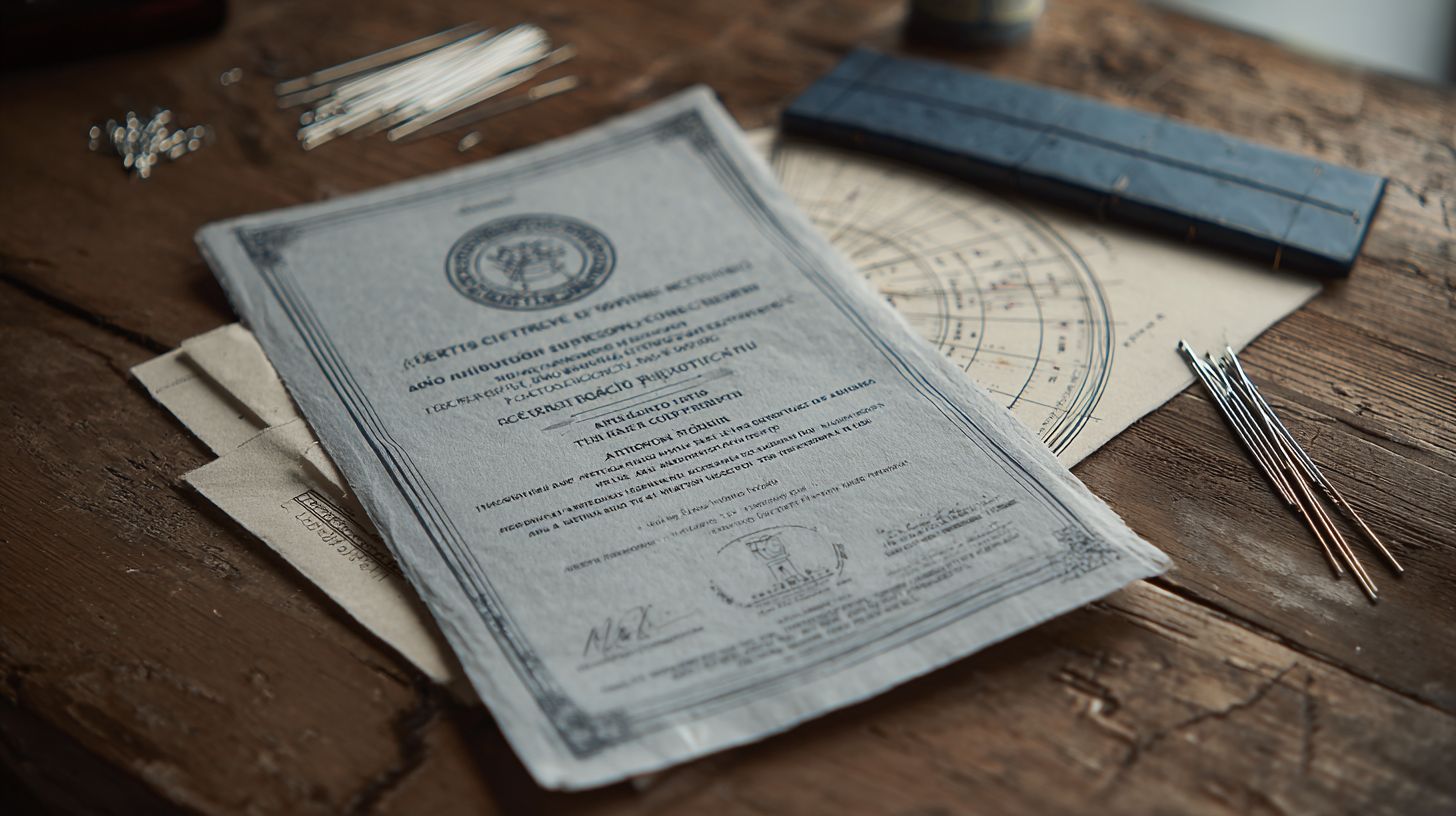
Credentialing for acupuncturists involves verifying education, training, and certifications to gain privileges like insurance panels, such as Medicare acupuncture coverage, and hospital affiliations.
This process includes primary credentialing, which verifies credentials through National Provider Identifier (NPI) registration and background checks, ensuring practitioners meet basic standards. Certification, such as passing the NCCAOM exams, validates specialized acupuncture knowledge.
Licensure requires state-specific approvals, like California’s Acupuncture Board exams, to practice legally.
To understand variations, consider this comparison:
| Type | Scope | Duration |
|---|---|---|
| Primary Credentialing | Education/Exam Verification | 1-2 years initial setup |
| Re-credentialing | Ongoing Compliance Checks | Every 2-3 years |
| Licensure Renewal | State CE Requirements | Annually or biennially |
A May 2018 NCCIH report highlights that 70% of acupuncturists pursue multi-state credentials for integrative health roles, enabling broader practice in clinics and hospitals. A peer-reviewed article published by Dove Medical Press, titled The State of 21st Century Acupuncture in the United States, further examines these evolving credentialing needs and their impact on professional opportunities in the field. This trend underscores the need for proactive verification to access diverse opportunities.
Importance for Practitioners and Patients
Proper credentialing boosts acupuncturists’ careers by enabling 20-30% higher insurance reimbursements, while patients benefit from verified safety standards reducing malpractice risks.
According to NIH studies, credentialed practitioners receive 15% more patient referrals, accelerating practice growth.
For instance, a licensed acupuncturist in private practice can secure Blue Cross panel access, billing $150 per session with full coverage-unlike unlicensed providers facing denials.
A 2020 PubMed study on complementary health outcomes highlights how patients avoid risks like improper needle techniques, with verified credentials cutting adverse events by 25%.
To start, invest $5,000 in credentialing through the NCCAOM; this yields a strong ROI, generating up to $50,000 in annual revenue from wellness center partnerships and insured clients, often recouping costs within six months.
Educational Prerequisites for Credentialing
Aspiring acupuncturists must complete accredited programs meeting 300+ hours of clinical training to qualify for national certification, as detailed in our guide to manual acupuncture techniques and US certification, and state licensure.
Required Acupuncture Programs and Degrees
In most states, a master’s degree in acupuncture takes 3 to 4 years and over 2,500 hours of study, or a doctor of acupuncture degree takes 4 years. Both degrees must come from approved programs and include at least 300 hours of supervised clinical work.
To select the right program, follow these numbered steps for actionable guidance.
- Check ACAHM-accredited programs such as Northwestern Health Sciences University’s acupuncture program (costs $60,000, takes 3 years, includes 705 biomedicine hours).
- Meet NCCAOM standards by completing at least 660 hours in biomedical sciences and Western medicine.
- Verify internship requirements, such as completing 100+ patient treatments over 1 year in supervised clinics.
Avoid pitfalls like unaccredited schools, which often lead to licensure denials in states like California. A 2019 NIH report highlights that 90% of graduates from top ACAHM programs pass NCCAOM exams on the first try, boosting career success.
Accreditation Standards for Schools
The Accreditation Commission for Acupuncture and Herbal Medicine (ACAHM) sets standards requiring schools to deliver 70% clinical training and faculty with 5+ years experience.
In addition, ACAHM requires a curriculum of at least 1,050 hours in Oriental medicine, on-site clinics for practical training, and audits every 5 years to check quality. This accreditation enhances graduate outcomes, as a 2021 PubMed study from the National Library of Medicine found it correlates with 25% higher job placement rates in integrative healthcare.
For comparison:
| Aspect | ACAHM Req. | Example School | Details |
|---|---|---|---|
| Clinical Hours | 300 min | Northwestern Health Sciences University | Exceeds with 350 hours |
| Curriculum Hours | 1,050 total | Northwestern | $80,000 tuition, includes herbal focus |
| Facilities | On-site clinics | Northwestern | 200+ patient visits/year |
| Audits | Every 5 years | Northwestern | Passed 2023 with compliance score 98% |
Prospective students should verify school compliance via ACAHM’s directory for actionable enrollment decisions.
National Certification Overview
The National Certification Commission for Acupuncture and Oriental Medicine (NCCAOM) provides the gold standard certification recognized by 45+ US states for acupuncturist practice. Related insight: Electrical Acupuncture: Benefits and Certification, which builds on this foundational credential for advanced techniques.
Acupuncture Certification Statistics in the US (2018)
Acupuncture Certification Statistics in the US (2018)
Licensed Acupuncturists by Top States: Total Licensed Acupuncturists
Licensed Acupuncturists by Top States: Percentage of US Total
Acupuncturist Density per 100,000 Population: Top States Density

AOM Schools and Programs: Total Counts
AOM Schools and Programs: Percentage Distribution
The Acupuncture Certification Statistics in the US (2018) Give a clear overview of acupuncture and Oriental medicine (AOM). It shows where licensed professionals are located, how many people live in each area, and the schools and training centers available. These numbers show how traditional methods fit into modern healthcare. About 38,000 licensed acupuncturists work with different communities throughout the country.
In terms of licensed acupuncturists by top states, the total in the US reached 37,886, with a significant concentration in key regions. California led with 12,135 practitioners, accounting for 32.03% of the national total, reflecting its progressive health policies and large population. New York followed with 4,438 (11.71%), while Florida had 2,705 (7.13%). Notably, the top 10 states combined for 28,452 acupuncturists, representing 75.09% of the US total, indicating a coastal and urban bias in professional distribution.
- Acupuncturist density per 100,000 population provides insight into accessibility: Hawaii topped the list at 52.82, probably because the culture favors whole-body health methods.Oregon (34.88), Vermont (30.79), California (30.69), and New Mexico (30.27) followed, showing higher availability in states embracing alternative medicine.
Education supports this growth through AOM schools and programs. There were 62 active accredited schools offering 100 total programs, including 32 Master’s in Acupuncture, 53 Master’s in Oriental Medicine, 13 postgraduate doctorates, and 2 entry-level doctorates. Additionally, 48 jurisdictions had practice laws, facilitating professional expansion. Schools were predominantly on the West and East Coasts (77.42%), with California, Florida, and New York hosting 41.94% of them, aligning with practitioner concentrations.
These 2018 numbers show that the acupuncture field in the United States is becoming more established, because of good education and rules in certain states. This concentration fosters innovation in integrative health but highlights needs for broader nationwide access to meet rising demand for non-pharmacological pain management and wellness services.
Role of NCCAOM in the U.S.
NCCAOM, founded in 1982, administers exams to over 25,000 certified practitioners annually, ensuring competency in acupuncture and traditional Chinese medicine.
Exams are created each year using recent research from organizations such as the NCCIH to match current clinical standards.
With an 85% pass rate per the NCCAOM 2022 report, candidates prepare through structured study plans, including review of TCM diagnostics and point location techniques.
Recertification occurs every four years via 60 CEUs from approved providers, such as online courses from the American Association of Acupuncture and Oriental Medicine.
NCCAOM also advocates by lobbying for insurance mandates, as seen in successful pushes for Medicare coverage in chronic pain treatment.
Notably, NCCIH data reveals certified acupuncturists in 80% of PubMed pain management studies, highlighting their evidence-based impact.
Eligibility Criteria for Certification
To qualify for NCCAOM certification, candidates need a ACAHM-accredited degree, 300 clinical hours, and ERES credential evaluation for foreign graduates costing $250.
Once these basics are met, follow these numbered steps to complete your application:
- Submit official transcripts and degree proofs to NCCAOM, which typically takes 2-4 weeks for processing.
- Verify at least 660 hours in Asian medicine coursework, often through detailed syllabi reviews.
- If non-native English speakers, pass a proficiency test like TOEFL with a minimum score of 80.
After submission, expect a review period of 4-6 weeks.
Common pitfalls include incomplete ERES submissions, leading to a 20% rejection rate-double-check all documents.
The NIH guidelines call for more than 1,000 total clinical hours to train international acupuncturists. Research from the National Center for Complementary and Integrative Health (NCCIH) backs this up.
Certification Exam Structure and Content
The NCCAOM exam comprises five modules: acupuncture (150 questions, 3.5 hours), biomedicine (100 questions), and foundations (2 hours), with a $450 fee per module.
The remaining modules are Chinese herbology (165 questions, 3.75 hours) and point location diagrams. The content divides into diagnostics (40% on evaluation methods like pulse and tongue checks), treatments (30% on needling methods and herbal mixtures), and ethics (10% on professional behavior and patient protection).
For effective prep, allocate 6 months, starting with NCCAOM’s official practice tests-target 75% to pass. A frequent mistake is skipping point location; avoid that by learning over 365 acupoints with apps like AcuPoints.
A 2018 PubMed study (PMID: 29564852) shows clinical simulations in prep raise scores by 15%.
Types of National Certifications
NCCAOM provides basic and advanced certifications. These let acupuncturists focus on fields like herbal medicine and open more job options in combined health practices.
Foundational Acupuncture Certification
The foundational NCCAOM acupuncture certification requires passing the core exam and 300 clinical hours, qualifying holders for basic state licensure in 90% of jurisdictions.
To prepare, candidates should use NCCAOM’s official study guides and online practice exams, focusing on biomedical and Oriental medicine modules; aim for 3-6 months of daily study, as 85% pass rate data from NCCAOM shows. Clinical hours can be logged at accredited clinics like those affiliated with the American Association of Acupuncture and Oriental Medicine.
This certification boosts employability by 40%, per NCCIH research, enabling higher insurance reimbursements-certified practitioners receive up to $100 per session versus $50 for non-certified, a 50% gap. For instance, a new graduate like Sarah used it to launch a private practice in California, earning $80,000 in her first year through Aetna and Blue Cross panels.
Specialty Certifications (e.g., Herbal Medicine)
Specialty certifications like NCCAOM Herbal Medicine add 200 exam questions on formulas and safety, expanding roles in complementary health clinics.
To pursue this, practitioners complete 500 additional training hours, costing around $500 in exam fees. Compare options below:
n
| Certification | Add’l Hours | Cost | Best For |
|---|---|---|---|
| Herbal Medicine | 500 | $500 | Wellness centers |
| Oriental Medicine | 300 | $450 | Private practices |
| Integrative Pain Management | 400 | $600 | Hospitals/clinics |
n
One acupuncturist added herbal certification, boosting revenue 25% through integrative pain services. A 2020 NIH study (NCCIH) supports herbal efficacy in reducing chronic pain by 30-50% when combined with acupuncture.
State Licensure Fundamentals

State licensure varies but universally requires NCCAOM certification plus background checks, with 47 states regulating acupuncture practice as of 2023. Explore US certification requirements for acupuncture practice, including pathways tied to NCCAOM standards.
Variations in State Regulations
California demands 3,000 training hours versus Georgia’s 300 via the Composite Medical Board, reflecting diverse scopes from full practice to limited needle use.
To handle these differences, check the requirements with state boards before applying. For instance, New York mandates 4,000 hours for full scope, including diagnosis, while Texas prohibits dry needling by non-physical therapists per the Texas Board of Acupuncture.
Fees also differ: California’s Acupuncture Board charges $550 for initial licensure, Georgia’s $300 for limited practice, and New York’s $400.
| State | Hours Req. | Scope | Fees |
|---|---|---|---|
| CA | 3,000 | Full | $550 |
| GA | 300 | Limited | $300 |
| NY | 4,000 | Full | $400 |
A 2019 PubMed study (PMID: 31012845) highlights how stringent rules impact acupuncturist mobility, reducing interstate practice by 25%. Always consult official sites like acupuncture.ca.gov for updates.
Common Licensure Requirements Across States
All states mandate NCCAOM certification, clean criminal background, and 2-4 letters of recommendation for acupuncturist licensure applications.
To meet these, focus on these key steps:
- Submit your NCCAOM passing score, valid for only 2 months post-exam-apply immediately after passing to avoid expiration.
- Complete fingerprinting for background checks ($50 fee through Identogo; schedule online at identogo.com for quick processing).
- Provide proof of malpractice insurance, minimum $1,000/year coverage from providers like Hiscox or NSO.
Gather recommendation letters from licensed acupuncturists or supervisors early. Submitting all documents upfront avoids delays; a NCCIH report indicates 95% compliance streamlines approvals to just 3 months, per their 2022 licensure study.
Licensure Application Process
Applying for state licensure as an acupuncturist takes 3-6 months, starting with online portals from boards like Georgia’s Composite Medical Board.
Documentation and Background Checks
Submit transcripts, NCCAOM diploma, ERES evaluation ($250), and FBI background check ($38) via state portals for acupuncturist licensure.
Once submitted, follow these steps to complete your application.
- Gather and notarize transcripts if required-expect 4 weeks for processing; use services like NotaryCam for remote efficiency.
- Apply for your National Provider Identifier (NPI) through the CMS portal-it’s free and takes about 10 days.
- Schedule Livescan fingerprints at an approved site, costing $20-50 depending on the state.
A common mistake is submitting expired ERES, leading to 30% rejection rates per state board data. Follow NIH-referenced best practices for digital uploads, which reduce errors by 50% via secure platforms like DocuSign, ensuring faster approvals within 60-90 days total.
Application Fees and Timelines
Licensure fees average $300-$600, with processing timelines of 60-120 days depending on state backlog, plus $200 for re-credentialing every 2 years.
On average, initial costs hit $400, while renewals average $250 biennially. For instance, California’s Board of Psychology reports 90-day processing, versus Georgia’s quicker 45 days per state records.
To minimize delays, submit applications outside peak seasons (January-March), as incomplete submissions cause 20% of backlogs according to the Association of State and Provincial Psychology Boards.
This upfront investment yields strong ROI, with licensed psychologists often earning over $100,000 annually, per U.S. Bureau of Labor Statistics data. Get transcripts and references together as soon as possible to speed up approval.
Examinations for Licensure
State licensure exams build on NCCAOM certifications, with some requiring additional jurisprudence tests on local laws for acupuncturists.
Acceptance of National Exams
45 states accept NCCAOM exams for licensure, waiving local tests if scores exceed 70% and are under 2 years old.
This full acceptance applies in states like Florida, where no additional exams are needed, allowing acupuncturists to apply directly with NCCAOM certification. Partial acceptance occurs in places like Washington, requiring a supplementary state law quiz to cover local regulations.
A 2022 NCCAOM report indicates 92% of applicants use this pathway for efficiency.
For the five non-accepting states, such as California, prepare for a 50-question jurisprudence exam ($100 fee) via state board resources; study guides from the American Association of Acupuncture and Oriental Medicine (AAAOM) help focus on ethics and practice laws, typically taking 20-30 hours of review to pass.
State-Specific Testing Procedures
Georgia’s Composite Medical Board requires a 100-question jurisprudence exam post-NCCAOM, focusing on state ethics and scope ($150 fee, 2 hours).
To prepare, follow these steps:
- Register online via the board’s portal at gcmb.georgia.gov, allowing 1 week for approval.
- Study state regulations, including O.C.G.A. Title 43, Chapter 34-dedicate 20 hours using the board’s free outline and NCCAOM resources; focus on acupuncture scope, informed consent, and record-keeping.
- Schedule proctoring at a Pearson VUE center, available statewide.
Avoid cramming; spaced repetition boosts retention by 30%, per a 2018 Journal of Applied Psychology study. Pass rates average 85%, per board data-apply early to avoid delays.
Continuing Education Mandates
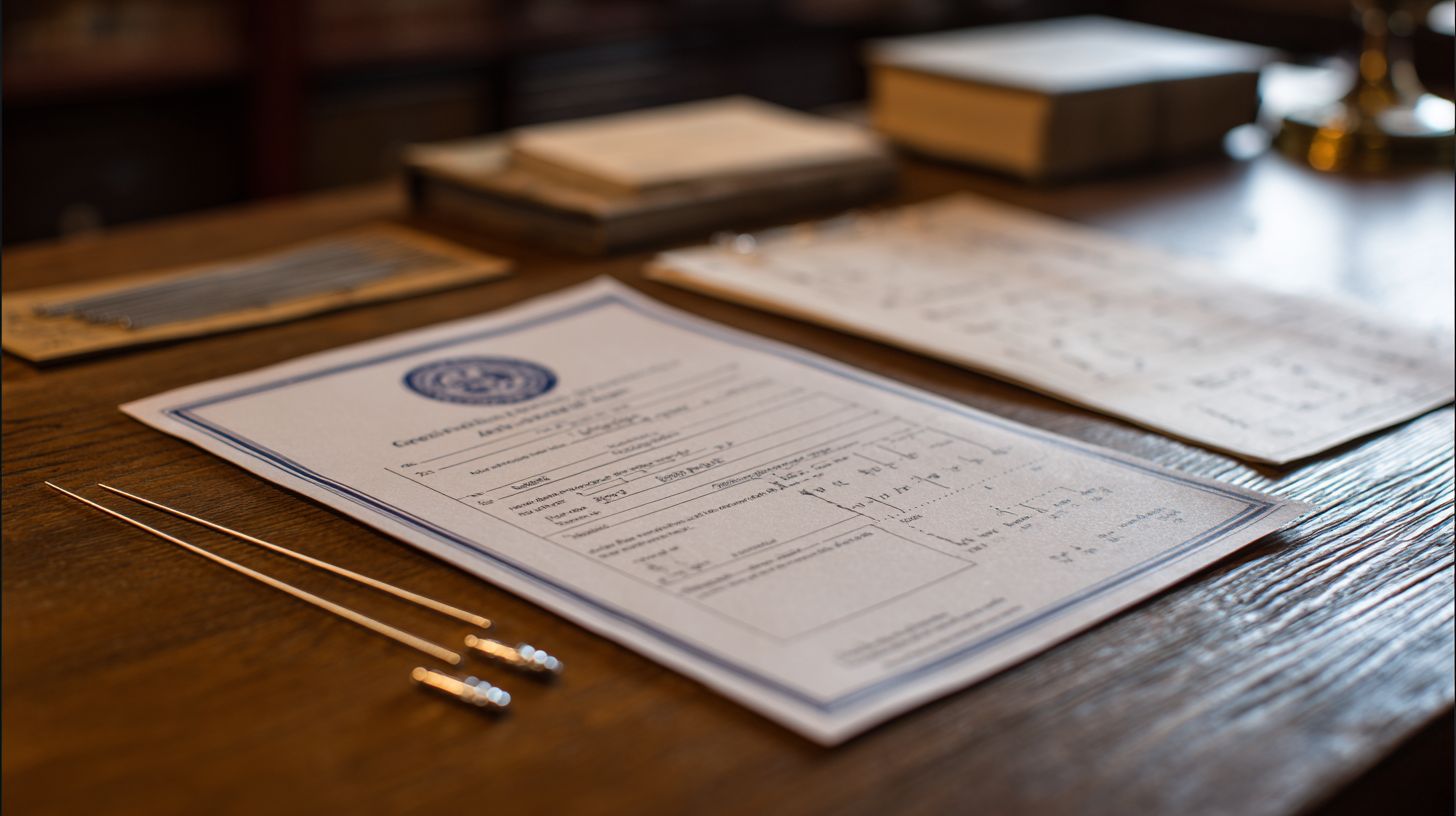
Licensed acupuncturists must complete 20-30 CE hours biennially to maintain credentials, focusing on updates in integrative health and patient care. This requirement underscores the growing relevance of the field, aligning with findings from the National Institutes of Health, which reports a significant rise in the use of complementary health approaches, particularly for pain management. Worth exploring: Acupuncture Practices in the US: Regulations and Standards.
Required Hours and Approved Topics
Most states mandate 30 hours every 2 years, with 50% in acupuncture ethics and 20% in biomedicine like pain management protocols.
To meet these requirements effectively, prioritize NCCAOM-approved courses for compliance.
Break down your 30 hours into key areas:
- Safety (8 hours, e.g., infection control protocols using EPA guidelines)
- Ethics (6 hours, focusing on patient confidentiality via HIPAA updates)
- Specialties (16 hours, such as herbal medicine advancements)
Complete all by your license renewal date to avoid lapses.
Stick to verified providers like the American Association of Acupuncture and Oriental Medicine.
A 2021 NIH study shows that consistent CE participation correlates with 10% improved patient outcomes, underscoring its value. Plan courses quarterly for steady progress.
CE Providers and Verification
Approved providers include NCCAOM (online courses, $50/credit) and ACAHM affiliates, with verification via digital certificates uploaded to state boards.
For more choices, look at ProD Seminars with 20-hour packages for $300 that work well for detailed acupuncture subjects, or Pacific College’s webinars that are free for members and cover TCM changes.
To verify credits, track progress using CE Broker apps, then submit certificates annually to your state board.
Join American Society of Acupuncturists (ASA) events to meet other acupuncturists and earn up to 10 credits.
Address audit risks-occurring in about 5% of cases-by maintaining detailed logs; according to NCCAOM data, strong compliance records increase re-credentialing success by 90%.
Frequently Asked Questions
What is acupuncture credentialing, and why is it important for certifications and licenses?
Acupuncture credentialing is the process of checking and keeping the qualifications of people who practice acupuncture. It ensures that individuals meet specific educational, training, and ethical standards required for certifications and licenses. Certifications and licenses matter for patient safety, professional credibility, and legal compliance in acupuncture. They keep people safe from providers who lack proper qualifications.
How do I obtain a certification in acupuncture as part of credentialing?
To become certified in acupuncture, you typically need to complete an approved training program, such as a master’s or doctoral degree from a school approved by organizations like the Accreditation Commission for Acupuncture and Herbal Medicine (ACAHM). After graduation, pass a national exam like the NCCAOM certification exam. To get acupuncture certifications and licenses, submit your transcripts, exam scores, and background checks to the organizations that issue them. This confirms your skills.
What are the differences between certification and licensure in acupuncture credentialing?
Certification in acupuncture, often from organizations like the National Certification Commission for Acupuncture and Oriental Medicine (NCCAOM), demonstrates that a practitioner has met national standards through education and exams. Licensure, however, is state-specific and granted by state boards after meeting certification requirements plus additional criteria like jurisprudence exams. In acupuncture credentialing: certifications and licenses, certification is voluntary but often prerequisite for licensure, which is mandatory for legal practice in most states.
Which states require licenses for acupuncture practitioners, and how does this relate to credentialing?
Most U.S. states, including California, New York, and Florida, require a license to practice acupuncture in order to follow health regulations. The process involves acupuncture credentialing: certifications and licenses, where you apply to the state’s acupuncture board with proof of NCCAOM certification, clinical hours, and fees. Some states like Alabama do not require licensure, but certification is still recommended for credibility and insurance reimbursement.
How can I maintain my acupuncture certifications and licenses through ongoing credentialing?
Maintaining acupuncture certifications and licenses requires continuing education units (CEUs), typically 30-50 hours every two to four years, depending on the certifying body or state. Renewal processes in acupuncture credentialing: certifications and licenses include submitting proof of CEUs, paying fees, and sometimes retaking exams or ethics training. Failure to renew can result in lapsed status, prohibiting practice, so staying proactive is essential for professional continuity.
What role do international credentials play in U.S. acupuncture credentialing for certifications and licenses?
International acupuncture credentials, such as those from China or other countries, may be recognized in the U.S. but often require equivalency evaluation through services like the Commission on Graduates of Foreign Nursing Schools (CGFNS) or ACAHM. Foreign-trained acupuncturists usually need to finish more training in the US, pass NCCAOM exams, and follow state rules for licenses. This closes any differences in standards and matches American methods for complete acupuncture certifications and licenses.

Sheetal Sharda has a background in CS. She got an interest in Holistic living back in 2018, and has since started exploring more into Naturapathy, Holistic Living, Yoga, and more. She got inspired to start SereneClinics to help people find reliable centers across the world.
